Ranking of Factions: Total War Warhammer II (part 1)
By ArbitraryWater 4 Comments
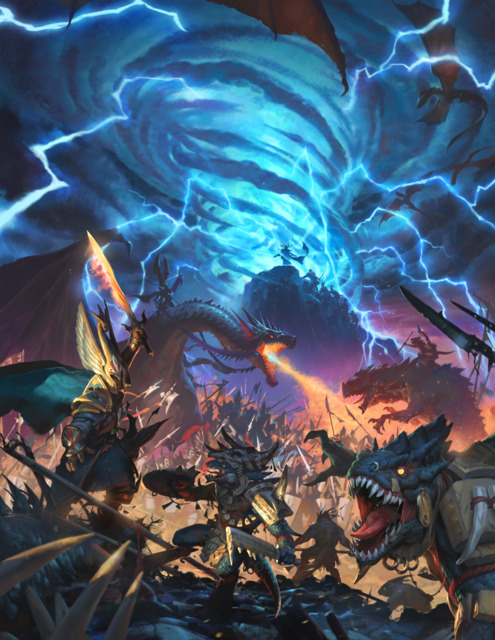
Oh hey there. Because I’ve put myself down a dark path, the games I’m currently playing the most in this current year are Monster Hunter World’s Iceborne expansion, and my continual Total Warhammer II habit. Backlog? What even is that? Oh, I guess I did play Bloodstained, but other than saying fairly definitively that game is "hella good" I don't really have much to add. Thus, while I’ve written extensively about my dangerous Monster Hunter habit, I figure it’s time to get some #content out of the best game I played last year that didn’t come out last year.
That, of course, comes by scientifically ranking all fifteen factions currently in Total War: Warhammer II. It’s no secret that I’m generally a sucker for strategy games, especially of the turn-based variety, and one of my favorite things about the genre is when there are varied and interesting faction choices to influence different strategies and playstyles. Total Warhammer is probably on the far end of this, with each individual faction playing significantly differently from one another on both the strategic map and in tactical battles, and that’s part of the reason why it’s currently consumed upwards of 200 hours of my life.
This inquiry is done as objectively and correctly as possible based on my entirely subjective opinion and my half-assed knowledge of Warhammer Fantasy lore gleaned from staring at a wiki for multiple hours. This list is also going to be split up into multiple parts, because no one should want to read all of the words I wrote about this game in a single, unbroken chunk.
15. Warriors of Chaos
Lore: The End Times are here, and with them comes the dark forces of Chaos, pouring out of the Northern Wastes! Servants of the four dark gods come to bring ruin upon the world and upon all life! You know those dudes who look like they’re straight off an 80s metal album? These are those guys.
Campaign Mechanics: The Warriors of Chaos are a Horde faction, which is a mechanic I’m to understand was introduced in Total War: Atilla. Instead of capturing and holding territory, each individual army is a settlement unto itself. Income is mostly derived from raiding and razing enemy territory, since it doesn’t really make sense for the heralds of doom to settle down and hang out in the towns they burn to the ground. While this sounds fun in theory, it offers three large problems that make them sort of a pain. Enemies can retake territory fairly easily, losing an army is devastating (since you lose all your infrastructure with it), and you don’t really ever need to engage in diplomacy and/or economy.
Army Roster: With only one artillery piece and zero ranged units outside of skirmish cavalry, it’s abundantly clear that Chaos’ focus is around their heavily armored infantry and powerful, terror-inducing monsters. Once you get past the lightly-armored Chaos Marauders (and you’ll want to, given that they’re a bunch of shirtless viking men capable of taking exactly zero punishment) you’ll get to the iconic Chosen, some Chaos Spawn, maybe a Hell Chariot or two for funsies. Just make sure to keep the enemy occupied long enough for your main force to get there.
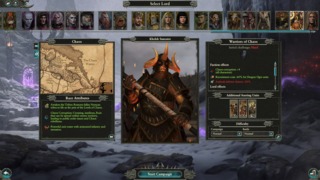
Favorite Legendary Lord: While there’s certainly a part of me that wants to give it to prettyboy of Slaanesh, Sigvald the Magnificent for being a complete dweeb it’s really hard to deny Kholek Suneater, the massive Dragon Ogre whose entire deal involves tearing through… just about everything. One of the few monstrous lords in the game… just keep him the hell away from high-level spearmen and people with guns.
Official Scientific Ranking: Last Place. Horde Faction mechanics aren’t very fun, and Chaos’ starting position at the very top of the map is extra not fun. Given that Total War: Warhammer III is supposedly going to be very chaos-focused, it’s heavily speculated that these guys are going to get some sort of rework around then to fit in more closely with their Daemonic counterparts.
14. Beastmen

Lore: Hey guys, it’s your friends at Chaos again, here to bring ruination to all things. However, instead of heavily armored warriors serving hellish masters, it’s the devolved savage Beastmen who dwell in the deep forests and seek the destruction of all uncloven ones. One of the DLC factions for the original Total War: Warhammer.
Campaign Mechanics: Like the Warriors of Chaos, the Beastmen are a horde faction who hasn’t really received any updates since the launch of Mortal Empires in Total Warhammer II. All of my qualms still apply, though Beastmen at least have a mechanic where you get to choose a powerful buff and debuff every few turns based on the phases of the moon. Their armies can also hide themselves when encamped, and have an automatic chance to ambush enemies.
Army Roster: If the Warriors of Chaos are defined by their roster of (mostly) slow-moving, heavily armored infantry then Beastmen are all about hitting that rush as quickly and cowardly as possible with their lightly armored cheap infantry and monsters. Most of their basic units have vanguard deployment and stalk, which allows for easy flanking setups (especially with their large unit sizes) alongside a mechanic that makes them faster and more dangerous while their leadership is high. Unsurprisingly, that speed and aggression comes at the cost of armor and leadership, which means most of their units have terrible staying power. Get in, maybe charge some minotaurs or razorgors into their backline, and give them zero chance to retaliate. If an enemy can weather that assault, things tend to go far less well for our Satan-worshipping goatmen.
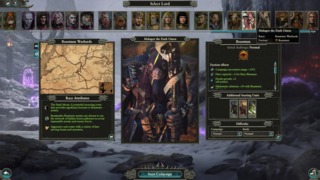
Favorite Legendary Lord: Malagor the Dark Omen, Prophet and Crowfather to the Beastmen is the obligatory caster lord of the bunch, with access to the Beastmen-exclusive Lore of the Wild. While creating explosive novas of vermin is fun, his real appeal is a constant, passive reduction of enemy leadership, which fits nicely with the Beastmen’s modus operandi of routing the enemy as quickly as possible. He’s also one of the components if you want to create quite possibly the dumbest doomstack army in the game.
Official Scientific Rating: Despite being one of the weaker factions in the game, I think I like the Beastmen more than Chaos, if only because you can pick your starting location and because their maximal rush style fits what I like to do more in combat. They’re likely due for a similar rework in the inevitable Total Warhammer III, but until then they and Chaos are probably the two DLC factions I’d warn any new player away from unless you wanna play them in competitive multiplayer
13. Greenskins
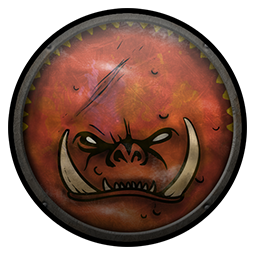
Lore: If you know anything about either flavor of Warhammer that isn’t just SPAYCE MUHREENS, it’s that the Orcs (or Orks, if you’re in space) are just football hooligans who are very into fightiness and waaaagh and being “tha rite tru git.” It’s exceptionally British and I’m very into it.
Campaign Mechanics: The Greenskins have remained virtually untouched since their debut in the first game, which means they feel really bare-bones next to most of the other factions, what with their “Elector Counts” and “Rituals” and “Interesting things to do outside of just conquering stuff”. They have a Waaagh mechanic, which summons an additional NPC army to accompany your own, if you keep your “fightiness” high enough. In theory, it’s a way to encourage momentum and emphasize how much the Greenskins are into constant fighting. How this works in practice is that you can summon an AI army who isn’t much good for anything other than suicide charging enemy settlements because they move after you do. They’re, uh, due for a rework this year.
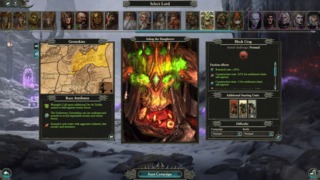
Army Roster: Because said rework has been talked up for a while, the Greenskins are the faction I honestly have the least experience with. They have a large, varied roster with the general trend of “big unit size, bad leadership” and exclusive access to the Big Waagh and Little Waagh spellbooks. Goblins are fast (and often sneaky), but squishy. Orcs (and especially Black Orcs) are strong, but not especially fast. Savage Orcs have no armor, but have a significant physical resistance to compensate. There’s a lot of overlap between them, and it can feel a little bloated as a result, but it also means there’s generally a tool for any given situation and any price range. Well, unless you want cheap armor piercing, because they don’t have that outside of the circumstantial Nasty Skulkers. Gee, sure would be nice to have a reliable early-game, low-cost form of armor piercing when the Greenskins main enemy is *checks notes* The Dwarfs, a faction whose roster revolves almost entirely around heavily armored units.
Favorite Legendary Lord: The greenskins have the dubious distinction of having the single most difficult campaign currently in the game, via Skarsnik, Night Goblin lord of Crooked Moon. Their other two choices, Black Crag and Da Bloody Handz, seem like they basically have the same starting area, except one emphasizes Savage Orcs more than the other. So, I dunno, Azhag seems fun, since he's the only way to get the solid Lore of Death and can still fight in melee.
Official Scientific Ranking: Wait for the rework.
12. Wood Elves
Lore: The Asrai protect the Oak of Ages, one of the few beacons of order keeping the forces of Chaos at bay. Other than that, they’re about what you’d expect from Wood Elves if you’ve ever been in a fantasy setting where varieties of Elves are distinguished from one another. Namely… they’re xenophobic, tree-hugging assholes who engage in things like “The Wild Hunt” and also hang out with treemen. One of the DLC factions for the original Total Warhammer.
Campaign Mechanics: One of the DLC factions for the first Total Warhammer, the Wood Elves have a unique settling mechanic and resource. Given the whole “xenophobic homebody” thing, the Asrai cannot construct major settlements outside of the forests of Athel Loren. Instead, capturing an enemy settlement just leaves you with an outpost that can’t be upgraded. More crucially, capturing settlements (or engaging in Military Alliances) gives the Wood Elves access to Amber, a special resource they need to build special buildings, recruit high-tier units, and ultimately reach their campaign victory conditions.
I’m to understand it worked pretty well in the first game, but the amber mechanic doesn’t scale especially well with the much larger map facilitated by the Mortal Empires campaign. Being stuck with just a small handful of “real” settlements is obnoxious, for as lore-conscious as it seems. Since most of your income is going to come from sacking enemy settlements, there’s something almost quasi-horde about the way the Wood Elves play… which as mentioned above, isn’t necessarily my favorite form of gameplay.
Army Roster: If you guessed that the Wood Elves have some of the best ranged and skirmish units in the game, congratulations, you’ve successfully absorbed decades (if not centuries) worth of fantasy stereotypes. What you might not have guessed is that the Asrai also have solid melee infantry, “ok” cavalry, and even some monster options with their treemen units. What almost all of them share in common is either lack of armor (in the case of most of the elf units) or a significant fire weakness (in the case of treemen.) Glass Cannons, essentially. But they don’t actually have any cannons, or any sort of artillery, so you’re still going to have to close *some* distance.
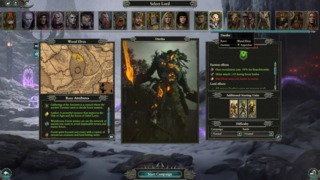
Favorite Legendary Lord: Orion might be a solid hybrid lord capable of erasing things at range or up close, but Durthu is basically angrier Treebeard with a giant sword made out of amber. I’m going to let that sink in.
Official Scientific Ranking: I think the Wood Elves actually have a pretty fun, fast army that is very good at harassing and whittling down the enemy. If their campaign wasn’t one of the more boring ones in the entire game, they’d be ranked much higher.
11. Brettonia
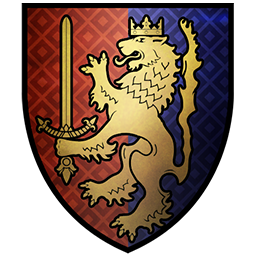
Lore: Brettonia is what happens when a bunch of British tabletop game designers make a fictional nation that is an over-the-top parody of Arthurian Knights, Feudalism, and the French. Brettonians love chivalry, honor, and the Lady of the Lake just as much as they enjoy taxing the shit out of peasants, treating them like subhuman garbage, and using them as cannon fodder in battle. It’s some real borderline Monty Python stuff, honestly. A free DLC faction for the first game.
Campaign Mechanics: The Brettonians take chivalry so seriously that it’s an actual, measurable mechanic/resource that ties into their victory conditions. Sacking an enemy settlement? Unchivalrous. Razing a den of evil to the ground? Very chivalrous. You can get more chivalry by issuing holy edicts calling for the extermination of a certain kind of faction, and as a result Brettonian campaigns are a little more sandbox-y.
Doubling down on the “feudalism” angle, the Brettonians are reliant upon their peasant economy to keep things flowing. How that translates in gameplay terms is that you can only field a limited number of infantry units based on number of settlements before it starts to eat into your income (to compensate, they don’t suffer a “multiple armies” penalty to upkeep) You can focus on that sweet sweet farm cash if you want, or you can emphasize industry to try and mitigate it instead.
Army Roster: Brettonia might have the single most skewed roster in the entire game. Their infantry are infamously cheap and expendable (Foot Squiers, their best foot unit, only cost 700. For comparison, Empire Greatswords cost almost twice as much) but that’s fine because they do cavalry better than anyone else. They have great cheap cavalry, they have great expensive cavalry, they have melee cavalry who can hang in combat, they have shock cavalry who are supposed to charge, pull back, and charge again. They have Pegasus Knights and Hippogryph Knights capable of maintaining air superiority, and they have Lords and Heroes are capable of riding horses or pegasi to charge through things too. Also they’re such dorks that they bless their trebuchets so they don’t cause splash damage.

Favorite Legendary Lord: Louen Leoncoeur is one of the strongest legendary lords in the game, Alberic de Bordeleaux is one of the weakest, and the Fay Enchantress is a squishy wizard. But are any of them Fantasy Joan of Arc? Nope. But Repanse de Lyonesse sure is! She’s also the only Brettonian lord available to play in the Vortex campaign and the only one who doesn’t start in Bretonnia itself.
Official Scientific Ranking: So, here’s the thing. I’m bad at cavalry micromanagement. Give me more than two units of shock cav and things are probably not going to go well, as I fail to cycle charge in and out. Brettonia is a faction who can run entirely off cavalry if they so desire, and in fact are penalized for fielding too many infantry. That means I’m, uh, not good with them. Other than that minor quibble, being able to throw endless horses at the enemy has its appeal. Assuming they’re not fielding endless spearmen.
10. Norsca
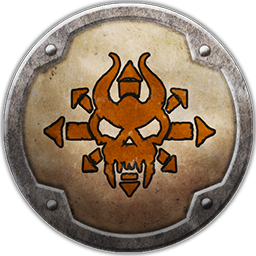
Lore: One of two factions on this list without a direct tabletop analog, Norsca asks the important question “What do all those Northmen tribes do when the end times aren’t happening?” The answer, of course, is to ravage and plunder the southern lands in the name of the four dark gods because Chaos is predictable that way. Just, you know, with more werewolves and mammoths.
Campaign Mechanics: As the last DLC faction released for the first game, as a bridge to the second, it feels like Norsca represents all of the lessons Creative Assembly learned over the course of making the first Total Warhammer. Namely, answering the important question of “What if Chaos was fun to play?” since you can actually capture and hold territory within the Norscan Peninsula. However, given that they live in a frozen, twisted wasteland, the Norscans don’t exactly have the most advanced building trees and economic infrastructure. If you want to maintain any sort of serious force, expect to do a lot of raiding, plundering, and even monster hunting to keep the cash inflow coming.
Similarly, when you raze and pillage enemy settlements, you can do so in the name of one of the four Chaos gods (Khorne, Tzeentch, Slaanesh, and Nurgle) to grant yourself fairly significant perks, either attempting to min-max the devotion towards one of them, or attempt to juggle favor between them. I would expect a similar mechanic to reappear should the other Chaos factions get reworked, or possibly if the Daemons of Chaos end up appearing in the third game.
Army Roster: Unsurprisingly, Norsca shares several units with the Warriors of Chaos and the same basic playstyle. Like their dark brethren, Norsca isn’t much in the ranged department (Marauder Hunters are actually capable of some pretty solid damage output, but are much shorter-ranged than the average archer unit) and are a melee-focused rush faction with strong infantry and scary monsters capable of inducing terror. The difference is mostly one of degrees, and Norscan units are generally faster and have larger unit sizes than their heavily-armored Chaos counterparts.
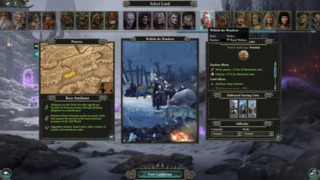
Favorite Legendary Lord: Only two choices for this one, and I think I have to go for Wulfrik the Wanderer over Throgg, for as much as I’m into a giant, intelligent frost troll as a faction leader. Wulfrik has been cursed to wander the world and challenge its greatest warriors, but he also can ride a mammoth and summon his accursed boat like it was a line spell. So… that’s pretty cool. He also gets upkeep discounts on Marauders and a hefty attack bonus for Mammoths, which is more useful than Throgg’s discount on trolls.
Official Scientific Rating: “Chaos, but Fun” is a solid way of describing Norsca, especially given how much of their roster borrows from Chaos. Even if their roster can sometimes feel a bit limited, they're one of the more fun rush armies in the game and being able to field a big stupid doomstack of Mammoths is something I can get behind.
And we'll stop here, with a third of the roster done. A THIRD. This was almost as much text as either of my Game of the Year blogs, but we're not stopping here. Here's Part 2.

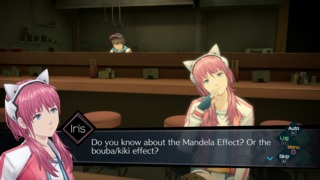
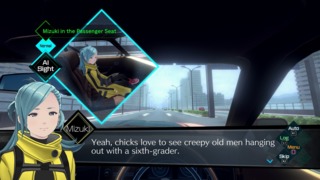

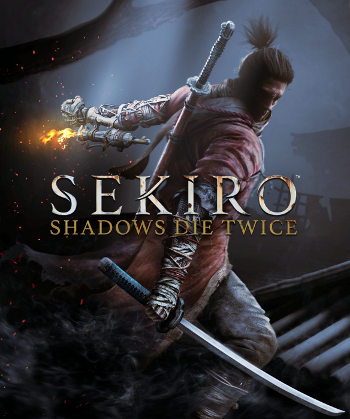
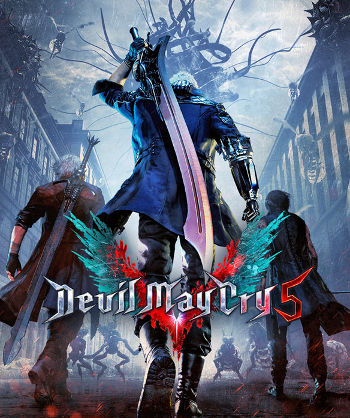
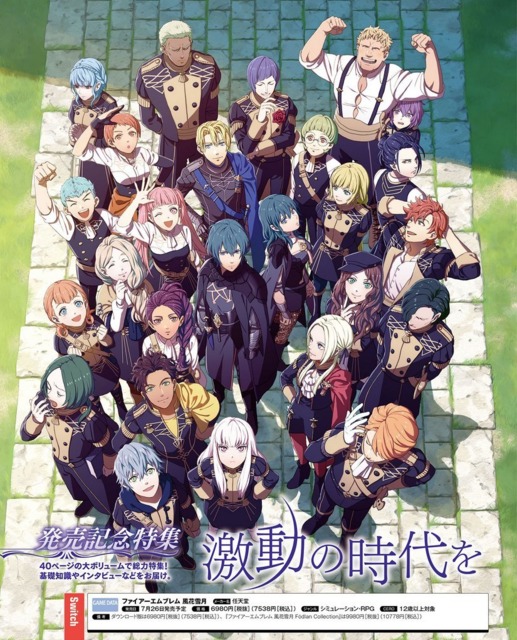
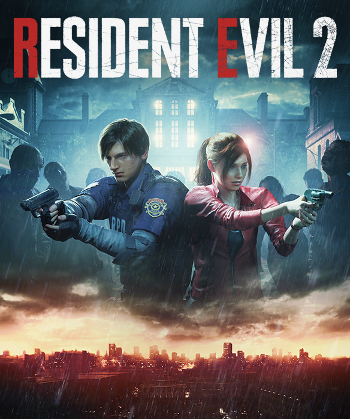
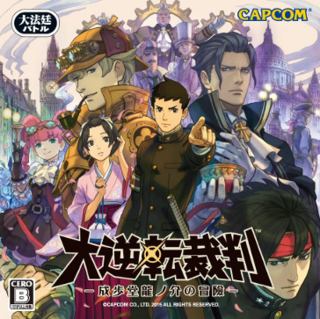

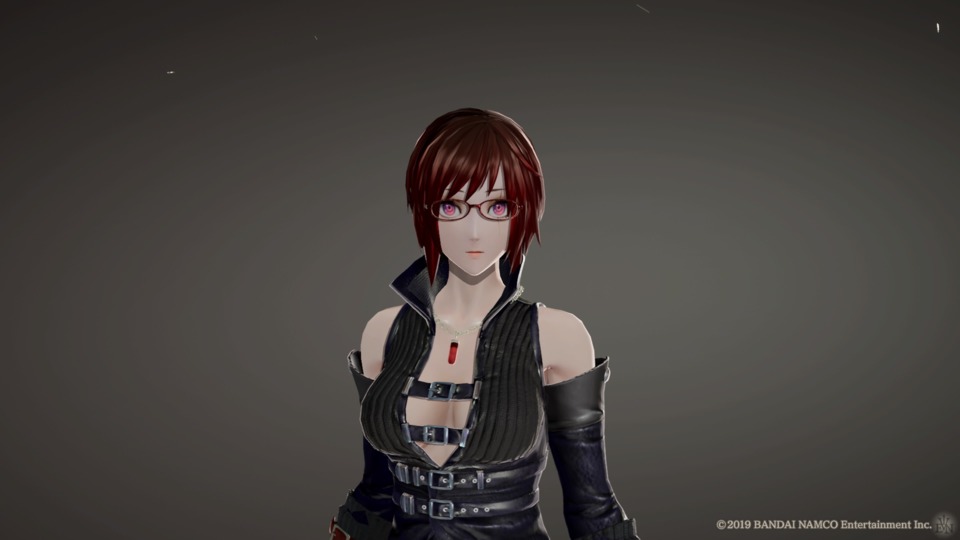

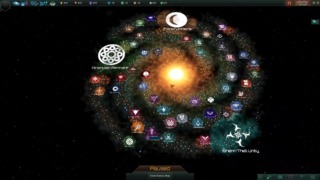
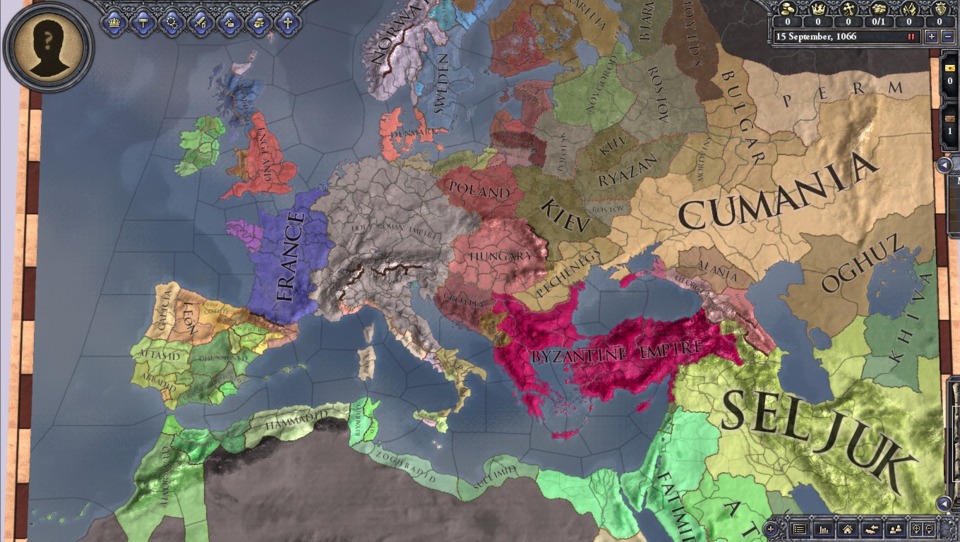

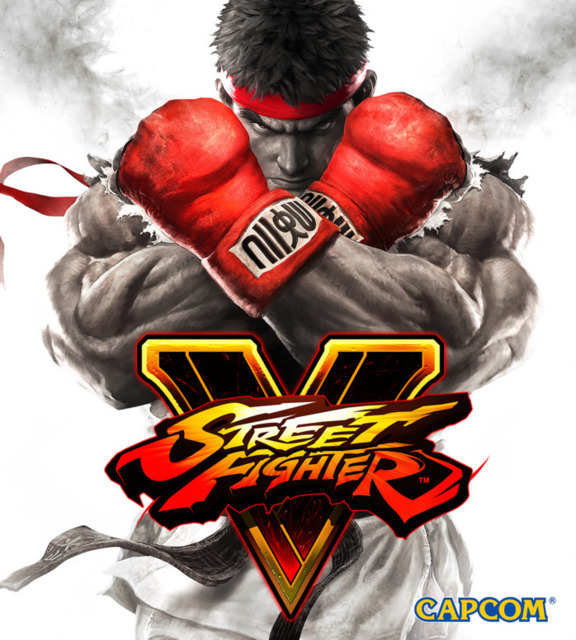
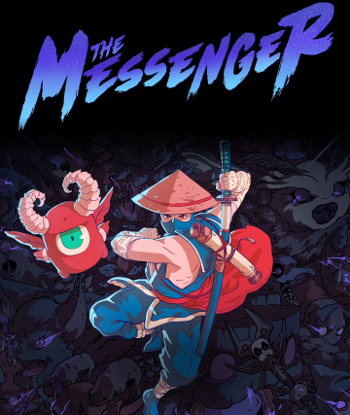
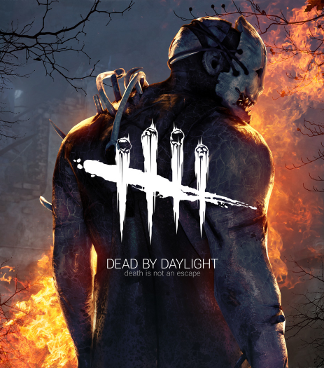
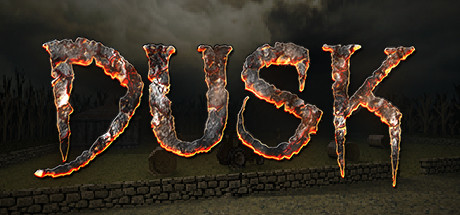
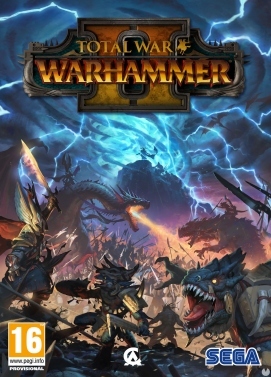
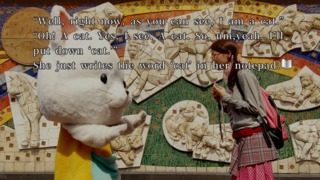

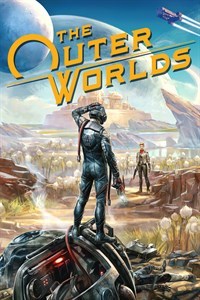
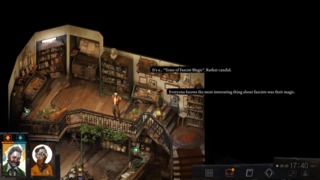

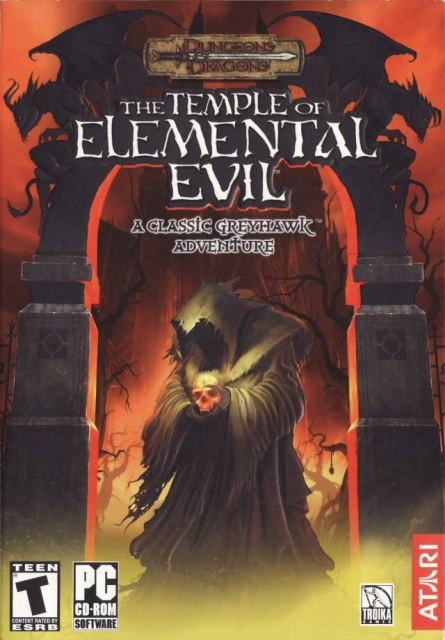

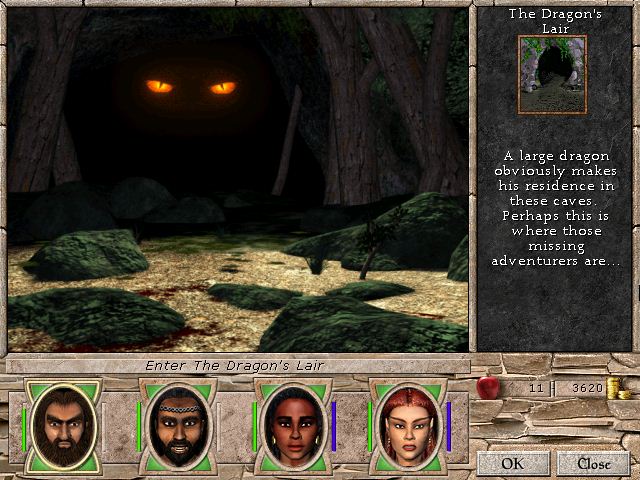
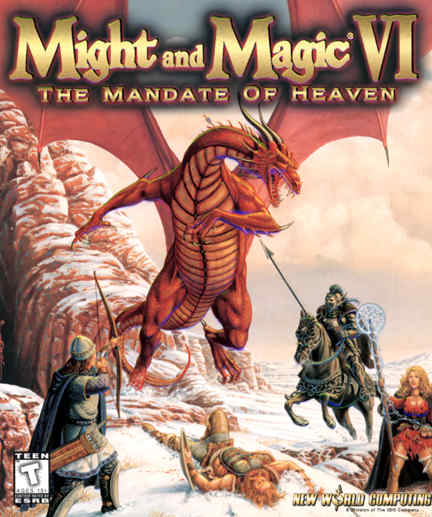

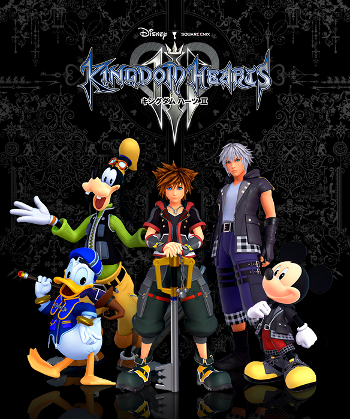

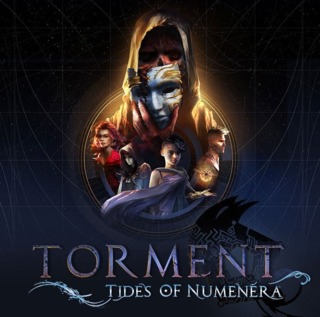
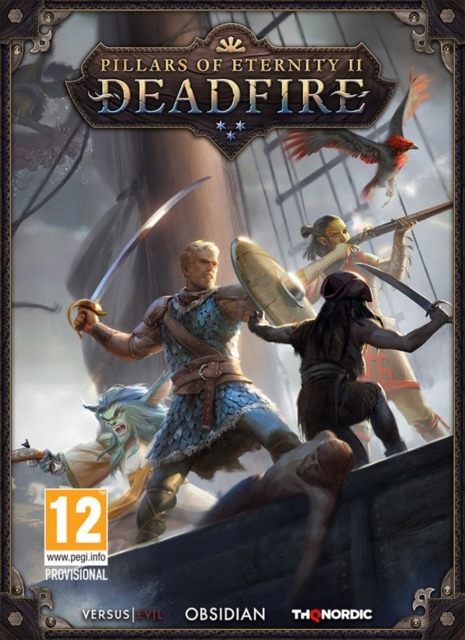
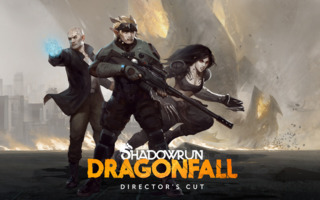
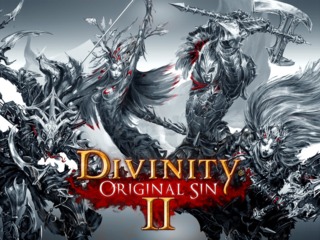
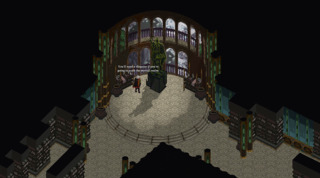
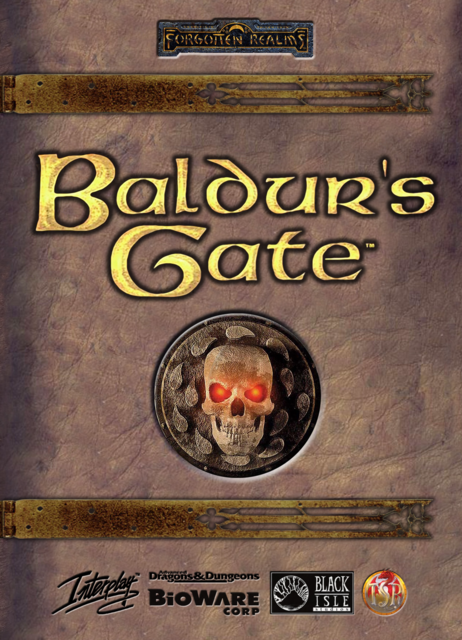
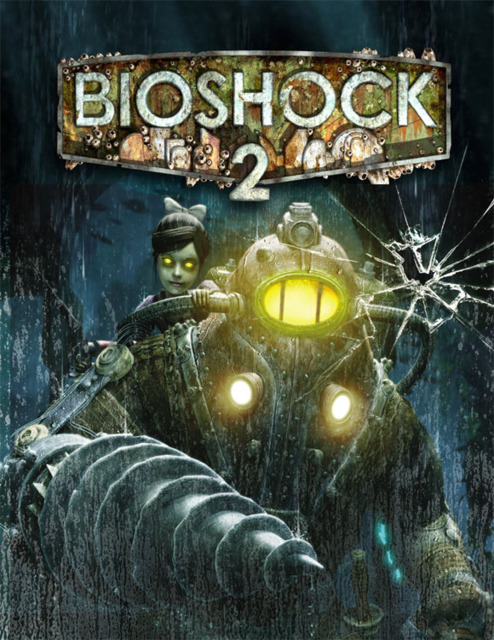
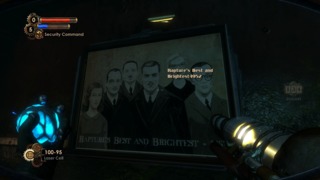
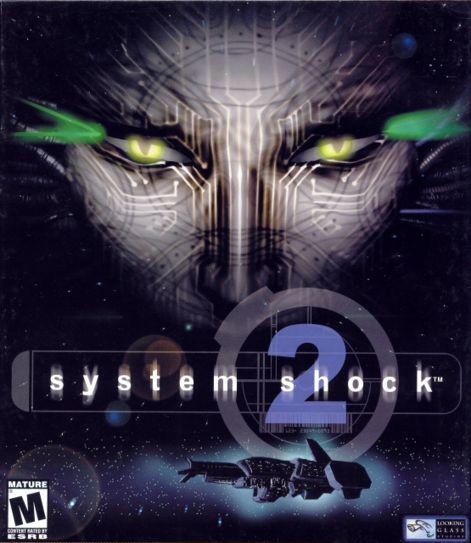
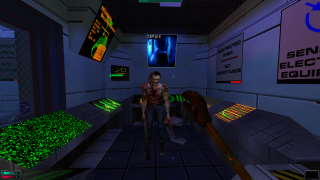
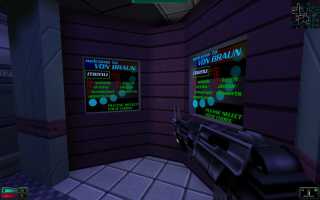
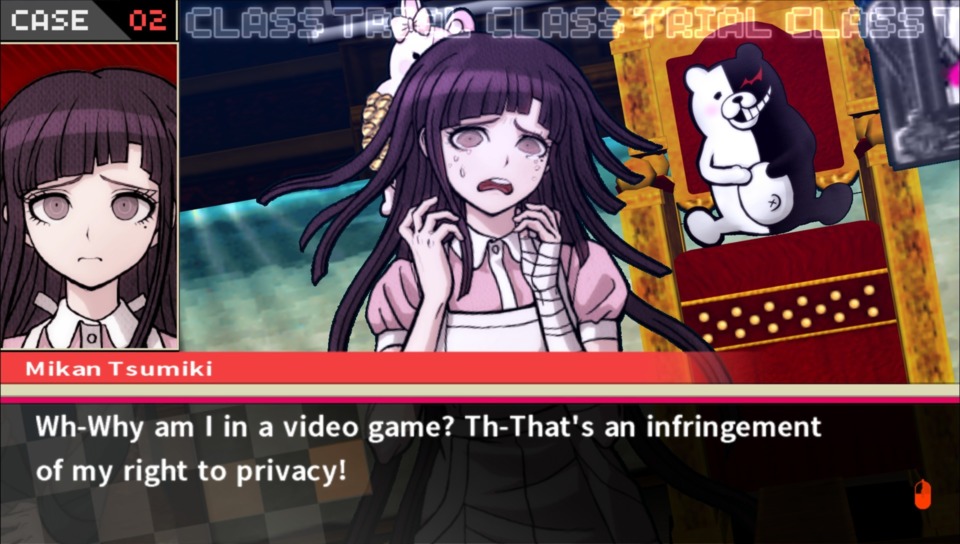
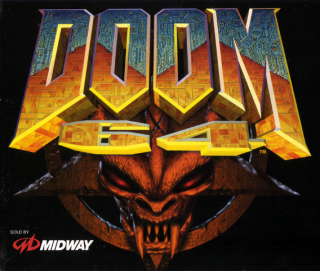
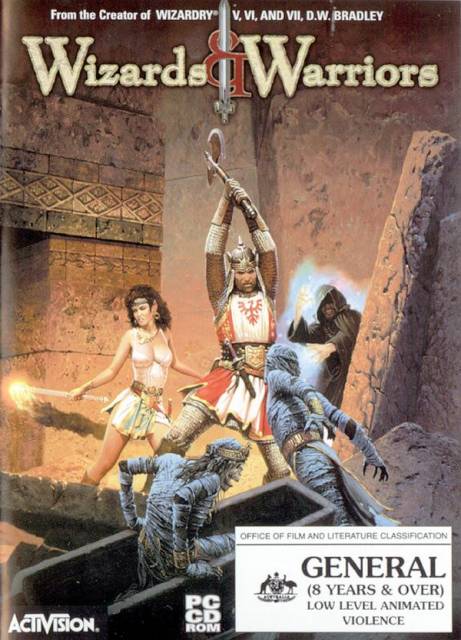
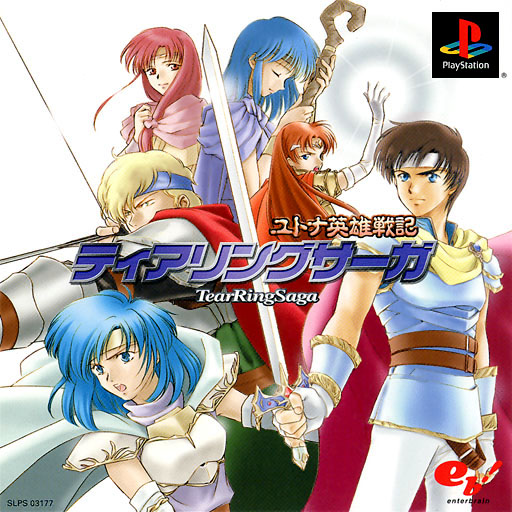
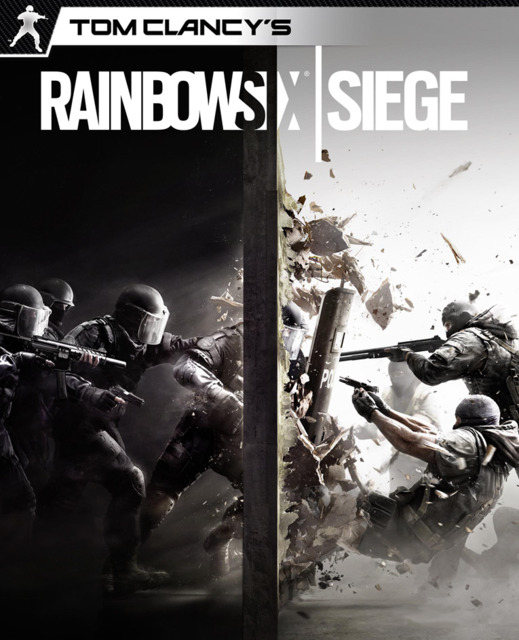
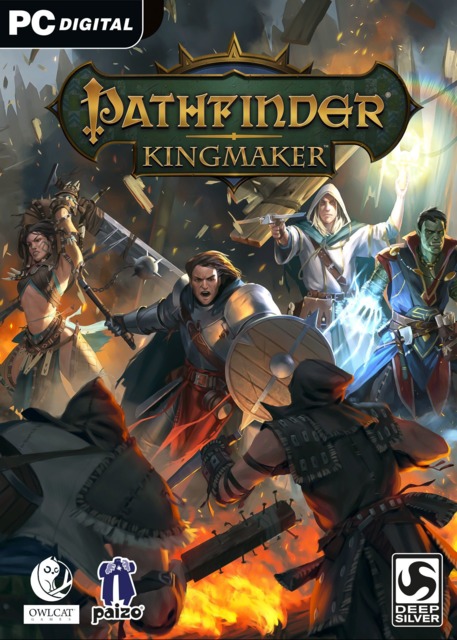
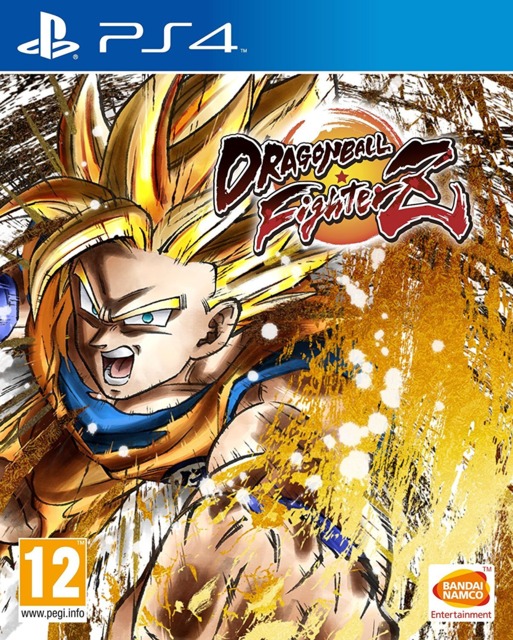
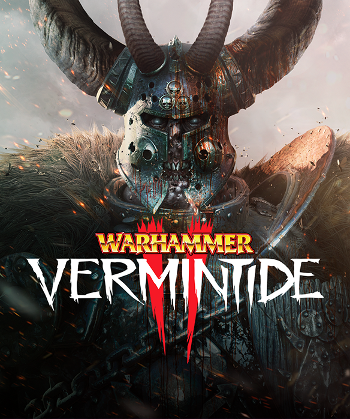
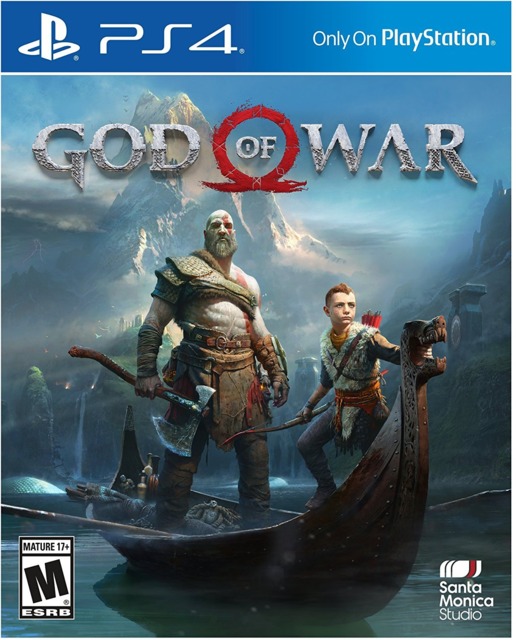
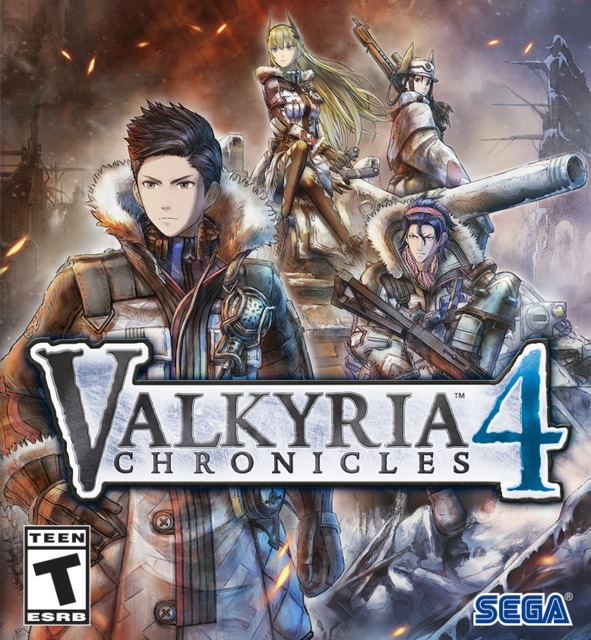
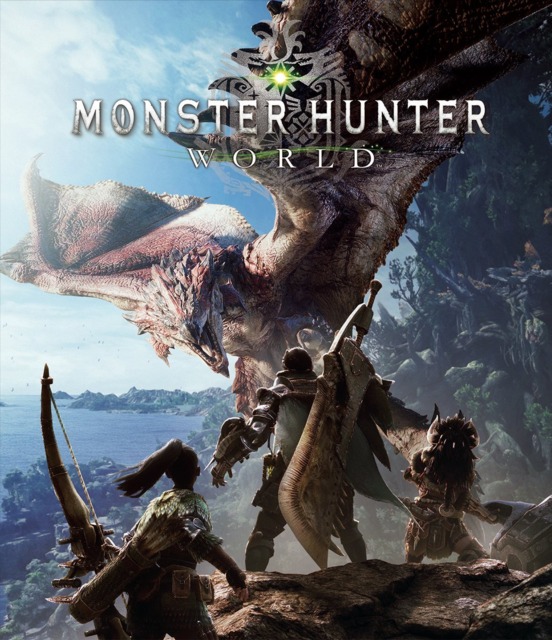
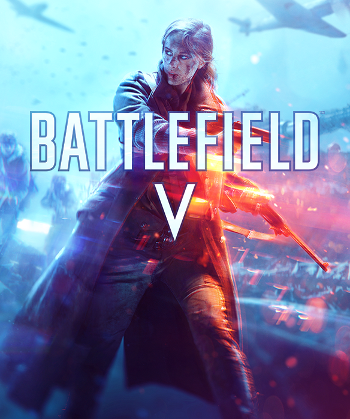
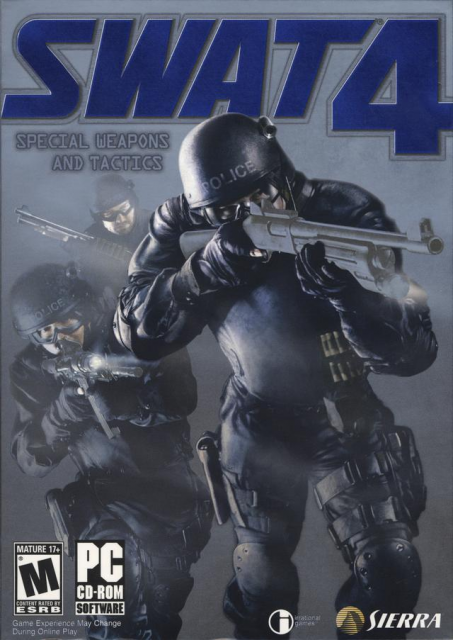
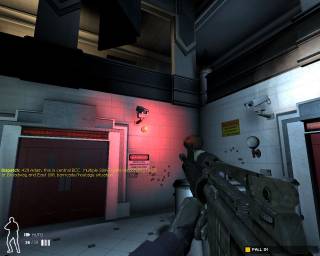
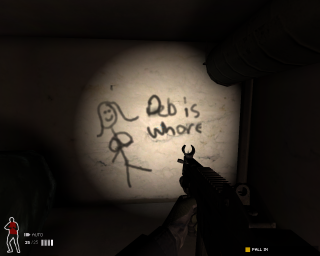
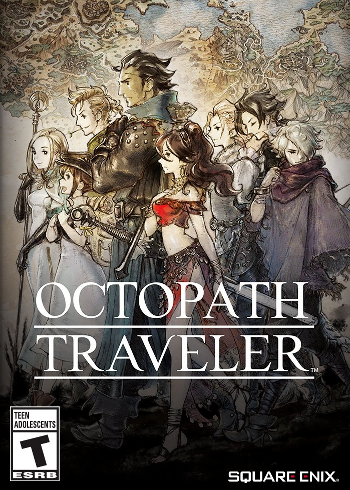
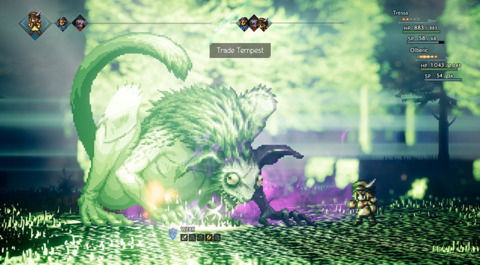
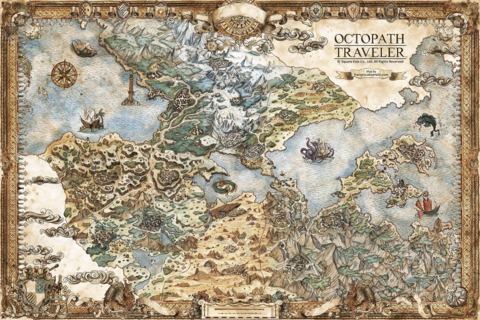
Log in to comment